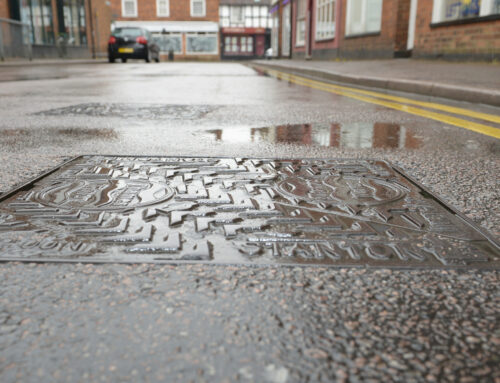Transfer of data between different parts of a system – whether it be the electronic control units in a vehicle connected via CAN, or in an industrial setting, linking components of a production process via MODBUS – is a common scenario when a complex system is made up of many interconnected parts.
The fact that you could reduce the wire loom in a vehicle was one of the key factors which motivated the adoption of the CAN bus in the automotive sector, because it meant lower manufacturing and maintenance costs. Every electronic unit could attach to one or more data buses, rather than needing to be wired directly to every unit.
A nuclear reactor can’t have its monitoring and control centre at the reactor core; hence another motivation for transferring the essential sensor readings elsewhere. Sometimes the monitoring functions need to be removed from the component that is being monitored, whether for safety reasons or in environments where space is at a premium, such as in an aircraft cabin.
This means that you need to transfer that sensor data, reliably, and in real-time.
The Project
The Real-Time Monitoring System (RTMS) consisted of two data concentrator units, one in an avionics rack at the front of the aircraft cabin, and the other in an avionics rack at the rear of the aircraft.
The RTMS acted as a bridge between sensor signals in the forward data concentrator and the aft data concentrator.
While the RTMS was not a safety-critical component, our end customer was an aerospace and defence contractor accustomed to operating to DO-178B/C, and as such, this project was subject to the same processes and stringencies.
Our Role
We acted as a software subcontractor to our client, a UK hardware distributor who had been contracted to supply two rugged data concentrator units. This was a “value-added” project for them, because rather than just shipping hardware, we were adding bespoke functionality to that hardware for them.
We were responsible for the firmware that would bridge the inputs and outputs of the forward and aft data concentrators, and the configuration of that firmware.
We took part in the Critical Design Review for the RTMS at our end customer’s premises. We presented the proposed software design to their senior project stakeholders, and answered their questions before the design was approved.
In addition to the bridging function, our firmware performed error checking and reporting using the units’ continuous background built-in tests.
While the firmware implementation was a critical part of our involvement, we also focused on the verification.
We built an automated test harness which could exercise the data concentrator units over a period of days and weeks, and demonstrated this to the end customer at our laboratory.
Finally, we worked with the end customer to complete all of the necessary documentation for their Quality Assurance processes, prior to the delivery and ultimate sign-off of the project.
The Technology
Data Concentrators
These were a pair of high-value North Atlantic Industries (NAI) SIU31 sensor interface units – rugged intelligent I/O boards with multichannel digital and analogue I/O modules, and Amphenol 88- 569776 front panel connectors.
We wrote the unit firmware in C, and installed it as a daemon on the NAI PetaLinux (Embedded Linux) instances running on the units.
Unit Verification and Integration
We designed and developed a bespoke National Instruments (NI) LabVIEW test harness, using an NI PXIe-1073 chassis with an NI PXIe-6363 multifunction DAQ module, NI SCB-68 connector blocks, custom wiring and MIL-DTL-D38999 circular connector plugs to connect to the data concentrator units under test.
We implemented a LabVIEW test front panel to reflect the inputs and outputs and the status of the test harness.
We were able to thoroughly exercise the I/O bridging, e.g. were the ports bridged correctly from the forward unit to the aft, with a variety of data patterns – walking, alternating, randomised – and long-running stress tests.
The Benefit
We are familiar with working in high regulatory environments, such as aerospace and defence, automotive and medical.
We have the capability to perform automated testing, for repeatable, verifiable test results.
We were able to leverage our test equipment investment on our client’s behalf, including industry-leading tools and experience which our client may not have had in-house, such as LabVIEW.
We were able to take a piece of general-purpose equipment and give it added value with smart failure-tolerant firmware.










